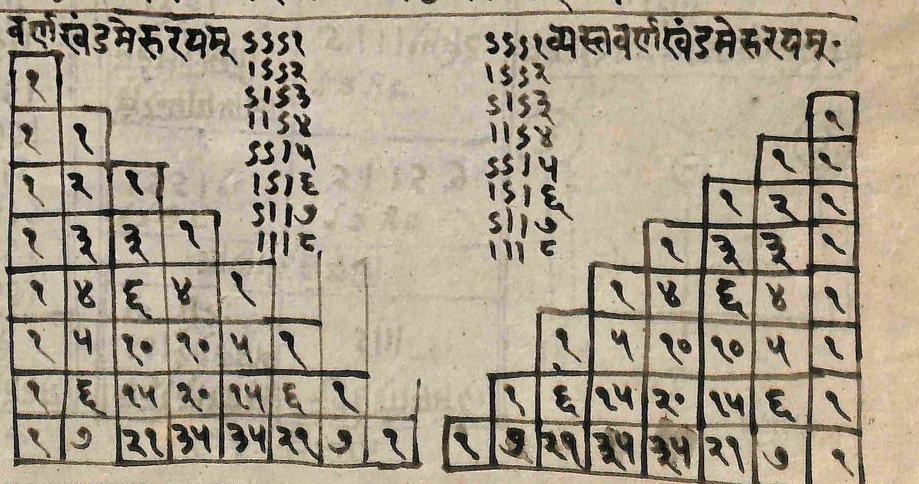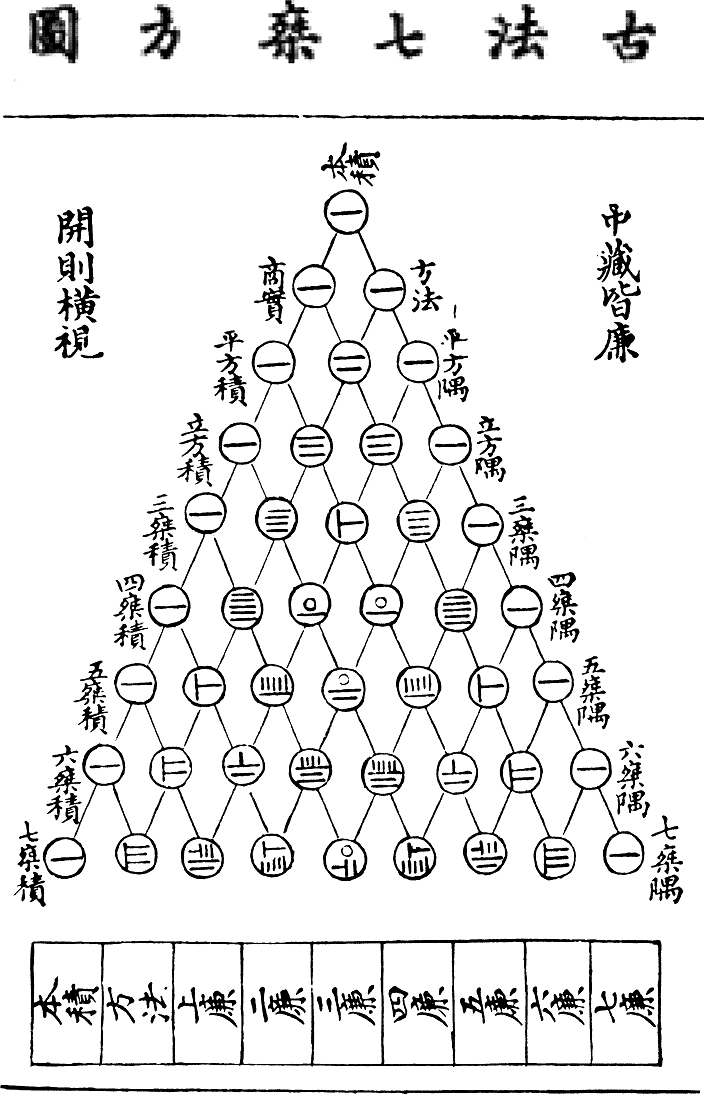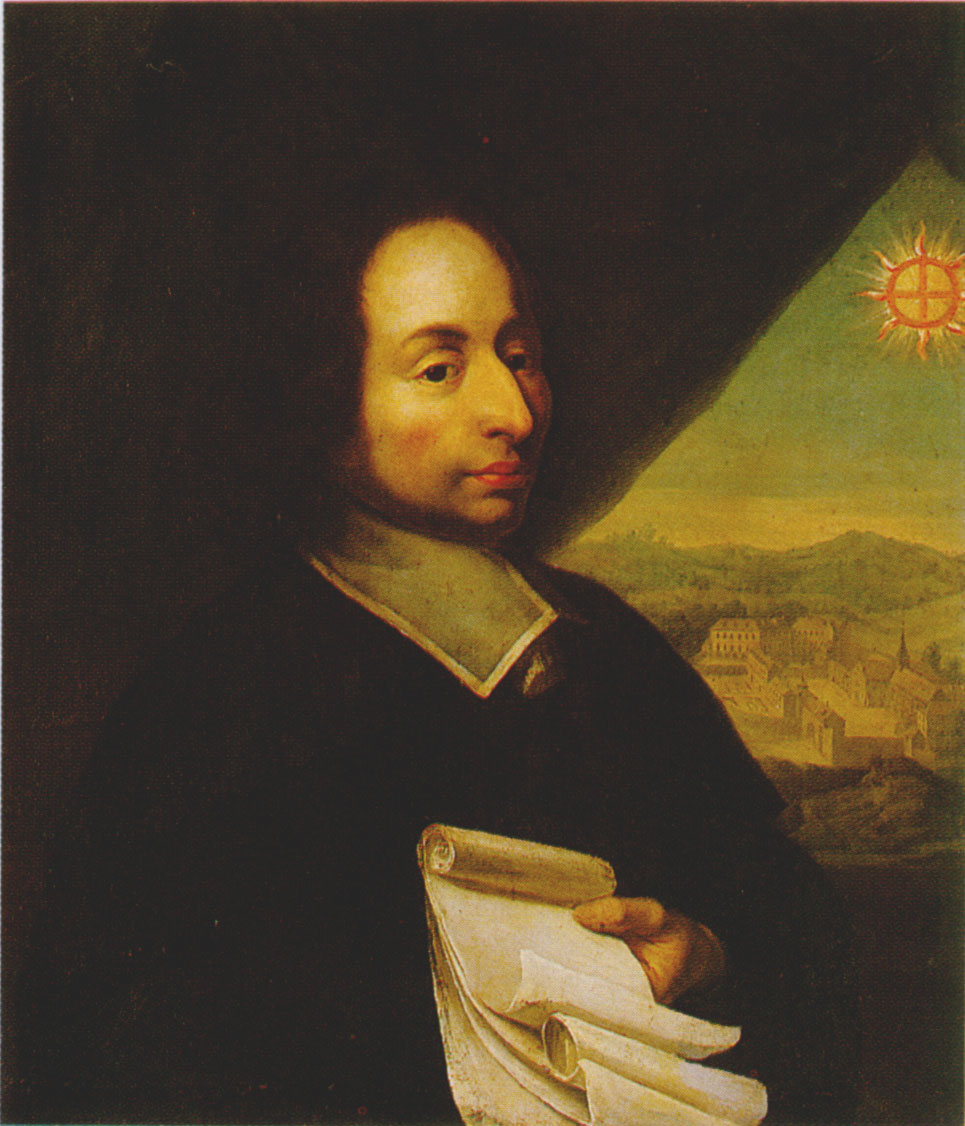
Despite the triangle being named after Blaise Pascal, he was not the first to discover the concept of an arithmetic triangle in this manner. The concept had been around for many years before Blaise published his work on it.
The first records relating to Pascal's Triangle come from India. Pingala was a famous mathematician from India around 300 BCE (Crystal Clear Mathematics). He wrote a book called Chandahsastra where he connected mathematics to Sanskrit poetry (Shah). As he worked with the relationship between meters and syllables, he found an algorithm for combinatorics. Pingala's work was expanded on for years afterward. There are disputes about whether his work directly led to the creation of a version of Pascal's Triangle, but a mathematician named Halayudha from the 10th century CE claims that Pingala's last sutra explains the construction of such a triangle. Halayudha is the one to give detailed instructions about what they call meru-prastara or the Staircase of Mount Meru.

By Pingala - Prakrit Pingala Prastara; Raghunath Temple, Jammu,J&K;https://archive.org/details/PrakritPingalaPrastaraVarnaMatraPatakadiYantrani775GhaAlm4Shlf3DevanagariAlankarShastra/page/n3, Public Domain, https://commons.wikimedia.org/w/index.php?curid=79808055
Persian mathematician Al-Karaji wrote a now-lost book with a version of Pascal's Triangle in the 11th Century CE. In Iran, Pascal's triangle is also known as the Khayyam Triangle for Omar Khayyam who recreated Al-Karaji's work using the binomial theorem. Khayyam was also a poet and astronomer (Crystal Clear Mathematics).

By Alireza Javaheri, CC BY 3.0, https://commons.wikimedia.org/w/index.php?curid=55909539
In China, the triangle was first recorded independently by mathematician Jia Xian. Xian published two books that are almost completely lost, Huangdi Jiuzhang Suanjing Xicao (The Yellow Emperor's detailed solutions to the Nine Chapters on the Mathematical Art) and Suanfa Xuegu Ji (O'Connor). Parts of his first book can be understood because of an analysis of the text by Yang Hui which explained Jia Xian's work. This work included a version of Pascal's Triangle and a method for creating the table. As a result, Pascal's Triangle is named Yang Hui's Triangle in China. The following illustration is a recreation of Jia Xian's triangle from the book Jade Mirror of the Four Unknowns by Zhu Shijie from 1303.

By Yang Hui , ca. 1238-1298) - w:en:Image:Yanghui_triangle.gif, Public Domain, https://commons.wikimedia.org/w/index.php?curid=1189650
The triangle started appearing in Europe in multiple places (Crystal Clear Mathematics). In the 13th Century CE, the triangle appeared in Arithmetic by Jordanus de Nemore. The triangle was put into Petrus Apianus' book on calculations in business in 1527. Niccolo Fontana Tartaglia published the first six rows of the table in 1556. In Italy, the table is called Tartaglia's Table .
Finally, Blaise Pascal combined much of the previous knowledge with his own work and Traite du triangle arithmetique (Treatise on the Arithmetic Triangle) was published posthumously in 1665. This work was unique because it was the first solely dedicated to analyzing the triangle. In this book, Pascal used the triangle to solve probability problems and applied many properties of the triangle.

By Unknown artist - Scan from the original work, Public Domain, https://commons.wikimedia.org/w/index.php?curid=194279
Pascal was first credited for the triangle in 1708 by Pierre Raymond de Montmort who labeled it, "Table of Mr. Pascal for combinations" in French (Crystal Clear Mathematics). He was credited again in 1730 by Abraham de Moivre. The table was called, "Pascal's Arithmetic Triangle" in Latin. This name became the common name for the triangle in the Western world.
The video provided below gives a quick timeline of the history of Pascal's Triangle for a quick recap.